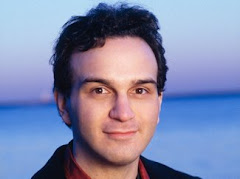A perennial visitor to the MPO for the last few seasons is the distinguished Italian conductor, Roberto Abbado. This time his concert comprised Mahler's Fourth Symphony, Barber's Knoxville: Summer of 1915 and Wagner's Tannhäuser Overture. Usually most conductors would set the programme in the order of Wagner, Barber and Mahler but with this arrangement, Abbado and the MPO were able to fully concentrate their musical efforts towards the largest and longest work of the evening first.
Mahler's Fourth Symphony is the most classically conceived of his symphonic oeuvre and the last of his symphonies to use the texts from Das Knaben Wunderhorn, a collection of German folk poems put together at the beginning of the 19th century by Achim von Arnim and Clemens Brentano. Abbado led a beautifully paced opening first movement of the Mahler, with a relaxed gait reflecting the wondrous and bucolic nature of the piece, marked Deliberate. Not hurried - Quite genial. The playing had a spontaneous feel and the sound was beautifully balanced, allowing the upper strings and cellos to glisten with gorgeous turns of phrases and hints of luscious portamento.
Abbado and the orchestra brought out the more demonic elements in the second movement’s Totentanz (Dance of Death). Leader Peter Danis, clearly relished and characterized his scordatura violin solos most vividly, evoking Freund Hein (Friend Henry) - a skeleton who plays the fiddle and is a traditional German personification of death by poet Matthias Claudius. According to Mahler's widow Alma, Mahler took inspiration for this movement from an 1872 painting by the Swiss artist Arnold Böcklin entitled Self-Portrait with Death playing the Fiddle. Calmer interludes offered some contrast in the manner of a Ländler, Abbado and the MPO wonderfully capturing the spirit of the dance.
The third movement is marked “serene” and Abbado unfolded it in a hymn-like manner with ravishing string tone that almost verged on inaudibility. The set of variations that slowly unfolded was full of calm nobility and tender soulfulness, sculpted into longer arches of sound into a higher state of bliss. When the music changed into a grandiloquent E major signaling the opening of heaven's gates, rising soprano Lauren Snouffer tip-toed into an empty seat in the midst of the first violins.
Moving centre stage swiftly as the fourth movement began, Snouffer would have benefited from sharper German diction and better projection over the orchestra. Nonetheless, her lovely tone served the text of Das himmlische Leben (The Heavenly Life) well, gorgeous and delicate. Abbado and the MPO thoughtfully complemented Mahler’s often very detailed word painting. At the end, Abbado left us relishing the radiant meadows of this ineffably beautiful view of heaven.
In the second half, Snouffer was the ardent soloist in Samuel Barber’s Knoxville: Summer of 1915 in a performance where both she and Abbado took a non-sentimental approach and a preferred moderate tempo. Her deeply moving rendition utterly enchanted the audience, though her diction was again not always ideally crystal clear.
A wondrous performance of Wagner's unequivocal masterpiece, the Tannhäuser Overture closed this magnificent concert. Abbado led the chorale invoking the Pilgrims’ Chorus in a grandly expansive and stately manner. The Allegro representing the sensual, impious Venusberg was attractively evoked: the feathery, frivolous skittishness of the strings, the uneasy, irregular swellings of sound threatening to go ballistic and the percussive battery of the grand central climax. The final reprise of the Pilgrim’s Chorus was once again sumptuous and solemn, with an altogether righteous Wagnerian majesty.
Wednesday, 20 June 2018
Abbado's marvellous Mahler, wondrous Wagner
Subscribe to:
Post Comments (Atom)



















































No comments:
Post a Comment